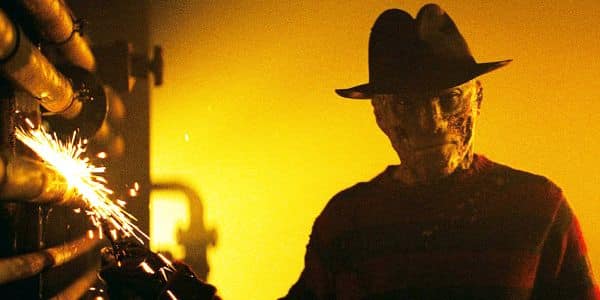Horror films are reincarnated time and time again. This year alone boasts the terrifying clown film It, a new Alien film, and follow ups to The Ring, Friday the 13th, and Insidious. Each time these stories return to the screen, there is an opportunity to deepen the plot. One of the things that the 2010 A Nightmare on Elm Street tried to do was change up the origin of Freddy Krueger. Instead of being labeled a serial killer, he was made a child molester; and for first-time viewers of the film, it tries to lead you into believing he was framed as a molester.
All in all, it was new territory for the franchise which previously only focused on Freddy Krueger as a serial killer and made it abundantly clear that he was guilty from the very beginning. It was an integral part of the original Freddy’s character – there was no sympathy to be felt, only evil.
And with the remake mostly being tired and uninspired, it could’ve helped a lot to have had a different perspective on the Elm Street slasher. Although some could argue Freddy should’ve remained a serial killer, it would have been interesting to see Freddy framed for the molestation. It would’ve even made more sense for Freddy to haunt dreams after his death. But the remake failed to build on any of that.
Rather, it traded the potential sympathetic reveal at the end to simply show us that Freddy was always guilty.But they did have one shot at obtaining sympathy, and it exists in the form of a cut opening scene.

This alternate opening gives us a look at Freddy Krueger, moments after being burned, as he lies in a hospital bed bandaged up to cover his wounds. It ends with Freddy’s monitor flatlining, leading into his death that allows him to cross into the dream world and kill the children of Elm Street.
Aside from building the viewer’s sympathy and leading them to believe Freddy may be innocent, it added one additional piece to the lore. It gave us a look at Freddy actually dying in a hospital instead of being burned alive and killed in his boiler room. Every other incarnation of the legendary origin has his life end aflame.
The 2010 version of A Nightmare on Elm Street is definitely nowhere near a decent film. But it does prove that some interesting concepts could’ve been used in a remake. And it’s a shame no one used them properly.
Thomas Dekker, one of the stars of that film, echoed similar statements in a exclusive interview with us last October:
“It’s a tricky one to talk about. I would say it was an honor to be a part of it. I think the cast as we know, we had two, now one-time Oscar nominee and another two-time Oscar nominee who’s still a very good friend of mine, Rooney Mara, and I think the issue at hand with that movie can’t really be thrown at the director because the director was basically a gun for hire to make it look good, and he did that. It looked great. But it’s basically like most good films tell a story, that film was to sell a tuxedo. It’s a sales movie. “It’s okay, we got this idea we’re going to take and we’re going to make money off it, so let’s just do that”. Even though the intentions of the artistic forces behind it were “Okay, we’re going to open up the mythology of Freddy Kruger, we’re going to make him darker and actually explore the idea of child sexual abuse” and those are all the things that interested me. Of course at the end of the day when you have to put it in 1,000 theaters or more, you have to shy away from those things and just make it a sell-able entity. So I think you can’t really start judging the leaves of a tree if the seed is fucked.”
Maybe with the next film, if we ever get one, they’ll give Freddy an outing worth remembering.

